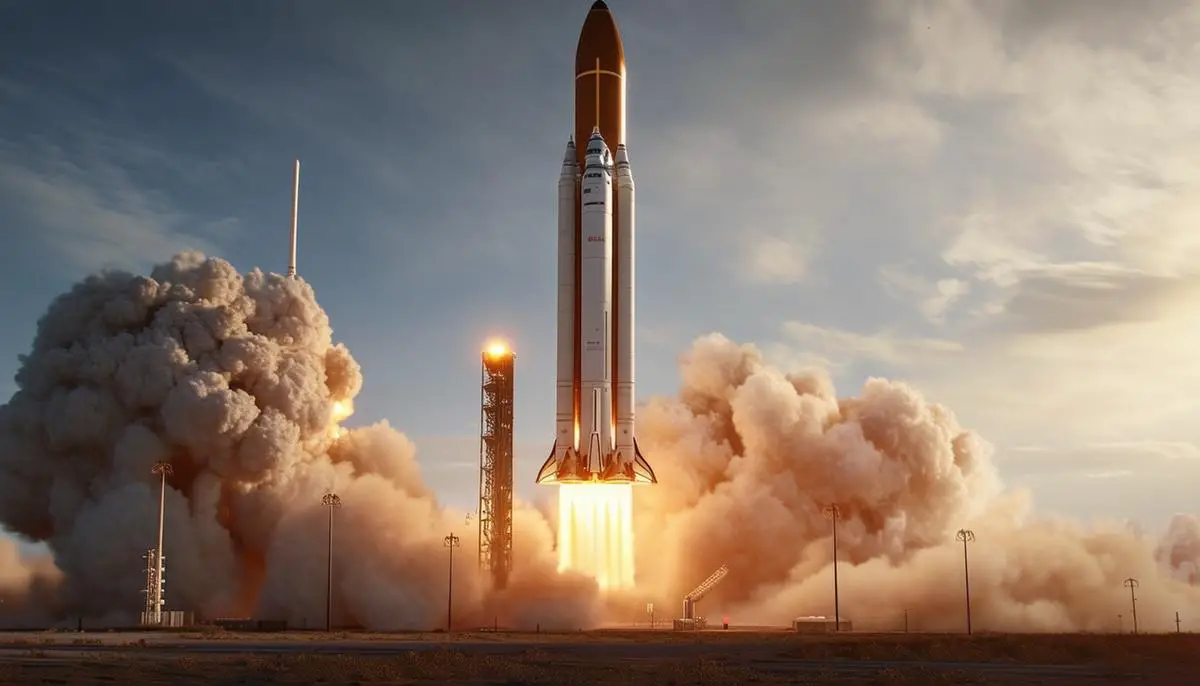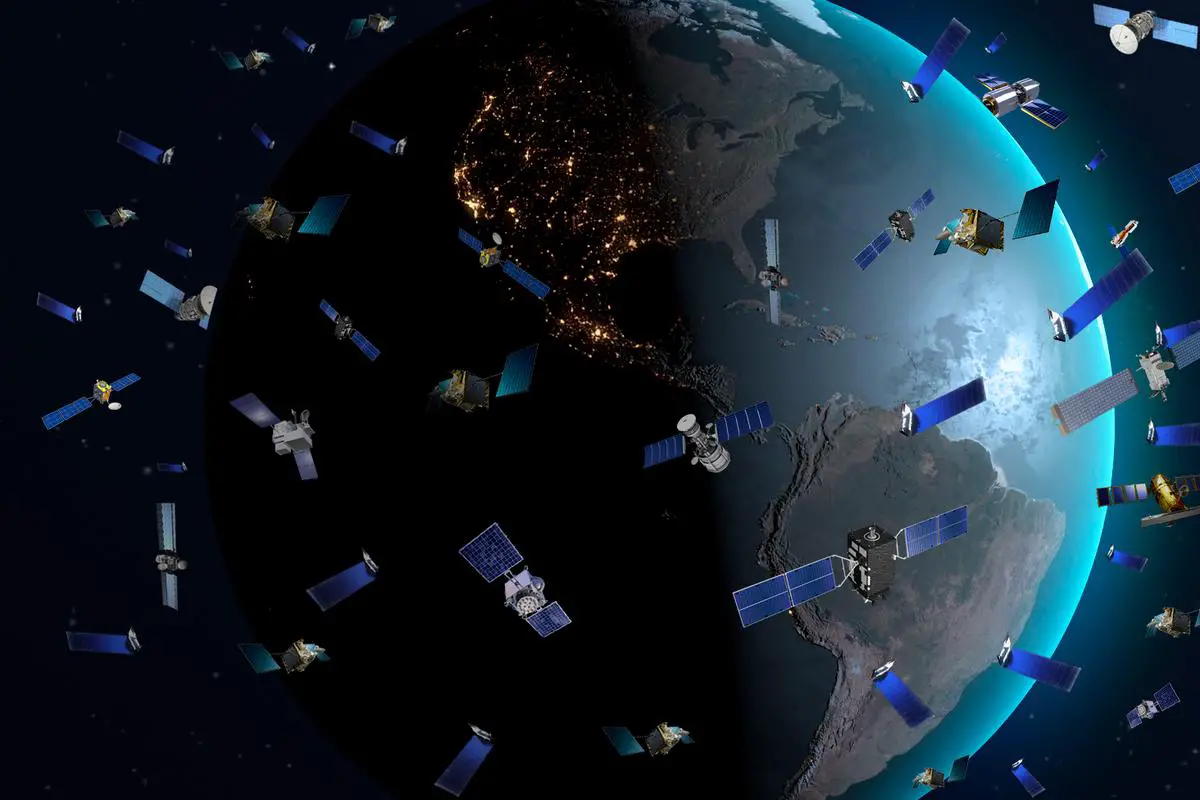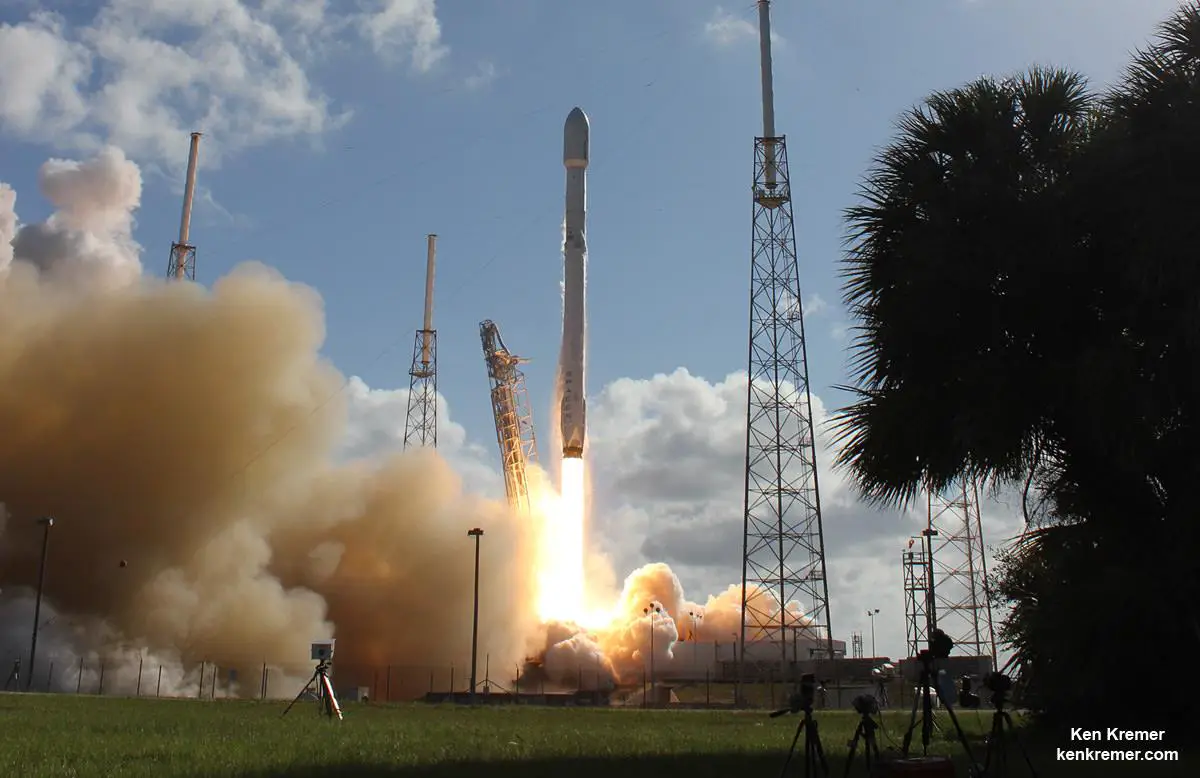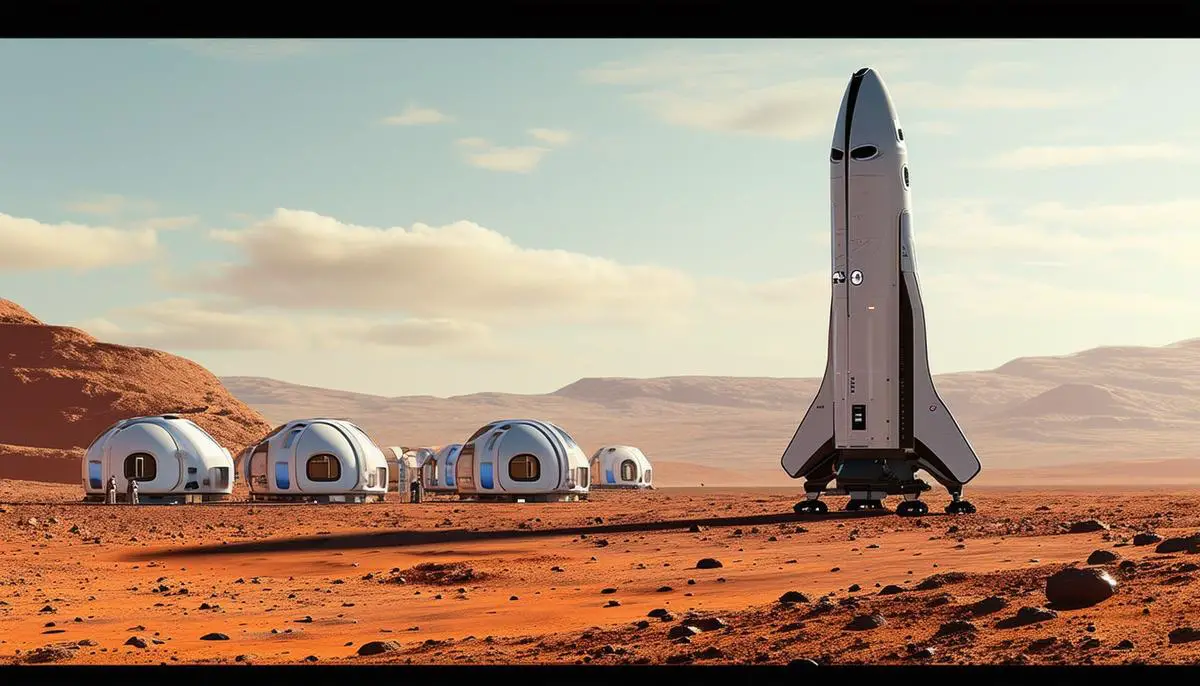SpaceX's ambitious plans for interplanetary missions, particularly the colonization of Mars, are grounded in a combination of technical innovation and strategic foresight. With a track record of consistent achievements and an unwavering drive to overcome challenges, SpaceX is setting the stage for humanity's next major advancement in space exploration.
Interplanetary Missions
SpaceX's ambition drives its notable efforts to colonize Mars. Elon Musk envisions settlements of up to a million people living on the Red Planet by the 2060s. This endeavor is backed by SpaceX's impressive track record, including regular cargo missions to the International Space Station and self-landing rockets.
The technical difficulties are significant. A round trip to Mars requires at least a year's travel through inhospitable space. Mars itself presents challenges, with an atmosphere less than two percent as dense as at Everest's summit. Even communication is a major hurdle. However, for Musk and his team, these obstacles are viewed as challenges to be overcome.
Political complexities add to the difficulties. Moving massive resources and humans to another planet involves not only scientific ventures but also political considerations with global implications. Policies, international relations, and funding issues are integral to a project of this scale. As John Logsdon, an emeritus at George Washington University's Space Policy Institute, noted:
"It's a choice, not an imperative."
Achieving international agreement and cooperation is often as challenging as the technical feats themselves.
The Starship-Super Heavy, SpaceX's mega-rocket, is central to these plans. Designed for rapid reuse, this rocket system aims to significantly reduce time and costs for multiple missions. The versatility of Starship enables it to suit various roles:
- Cargo missions
- Crewed flights
- Potentially, interstellar travel
The ship will carry astronauts to the lunar surface under NASA's Artemis program, projected for launch around 2025 to 2026.
SpaceX is aiming for rapid iteration, continually refining its technology. Their "build, fly, and iterate" approach is a hallmark of Musk's strategy. SpaceX's pace is evident in their achievements, having carried out 96 orbital missions in 2023 alone. Plans for 2024 include an ambitious 144 flights, which would require launches every 2.8 days.
Starlink, SpaceX's satellite network, is another vital component of this plan. It aims to provide worldwide internet and partially funds SpaceX's Mars aspirations. As of September 2024, there are 6,426 Starlink satellites in orbit. Despite concerns from astronomers about light pollution and collision risks, Starlink is crucial for the economic aspect of the Mars project and offers resilient communications support during natural disasters.
Public and private investments play crucial roles. SpaceX's continuing success invites more entrants and boosts investor confidence in the space industry. Companies like Blue Origin, with increasing focus and new leadership, are poised for serious competition. This influx of investment updates the technological landscape, making once-dreamlike projects feasible.
While significant obstacles remain, innovative engineers and policymakers continue to develop solutions to overcome them. SpaceX's progress suggests that what was once considered impossible is now becoming increasingly achievable.
Starship Development
The Starship rocket exemplifies SpaceX's innovative approach and ambition. This vehicle, standing approximately 400 feet when fully assembled, consists of two key elements:
- The Super Heavy first-stage booster
- The upper-stage spacecraft, also known as Starship
Both components are powered by SpaceX's advanced Raptor engines—33 for Super Heavy and six for Starship. The design focuses on full reusability, aiming to reduce launch costs and enable rapid reuse with minimal downtime between missions.
Starship's capabilities are substantial, with a payload capacity of up to 165 tons to low Earth orbit, surpassing existing rockets. This capacity is crucial for missions requiring significant cargo, such as constructing lunar bases or transporting supplies to Mars.
SpaceX has demonstrated its commitment to refining Starship through a series of test flights. In March 2024, the third test flight marked a milestone for the program, achieving several significant objectives:
- The Super Heavy booster executed a "boostback burn" after stage separation
- The upper-stage Starship reached orbital velocity
- Successfully deployed its payload door in space
- Survived reentry into Earth's atmosphere for approximately 50 minutes
These test flights are integral to SpaceX's iterative process, which involves rapidly cycling through design, testing, and refinement stages. This methodology has enabled them to address engineering challenges efficiently. Elon Musk has expressed ambitions to conduct at least six Starship missions in 2024.
Starship's versatility is a key asset. NASA plans to utilize it for the Artemis program, with a crewed lunar landing projected for September 2026. Multiple tanker missions will be required to refuel Starship in Earth orbit for the return journey, with the number of these missions still under discussion.
SpaceX envisions Starship as central to Martian colonization. Future iterations are expected to support interplanetary missions, carrying both crew and cargo to Mars. Musk's plans envision fleets of Starships making the journey every 26 months when Earth and Mars align favorably.
The focus now turns to upcoming test flights, which will inform the pacing and scope of subsequent missions. SpaceX plans to test both newer Starship prototypes and additional Super Heavy boosters, with each flight providing crucial data for further refinement.
SpaceX's ability to iterate quickly, learn from failures, and build upon successes has put its ambitious goals within reach. As more test flights validate the design and capabilities of Starship, the vision of a sustainable human presence on the Moon and Mars becomes increasingly tangible.

Starlink Megaconstellation
SpaceX's Starlink satellite network combines innovation with practical utility. Established to provide low-cost internet access to remote regions, Starlink has made significant progress in its deployment. As of September 2024, 6,426 Starlink satellites are in orbit, with 6,371 operational, forming a crucial component of SpaceX's strategy.
The V2 Starlink satellites, weighing around 1,760 lbs (800 kilograms) at launch, feature advanced argon Hall thrusters, refitted phased array antennas, and E-band backhaul capabilities, quadrupling their data capacity. The operational approach incorporates a continuous upgrade cycle, with older satellites deorbited and replaced every five years.
The Starlink project has faced criticism, particularly from the astronomical community, due to concerns about light pollution and increased collision risks in low Earth orbit. Efforts to mitigate these effects include equipping recent satellites with visors to reduce reflectivity. However, the large number of satellites continues to pose challenges.
Environmental implications are under scrutiny, particularly regarding the deorbiting process and its potential effects on atmospheric chemistry. More research is needed to understand these impacts fully.
Functionally, Starlink has proven valuable in emergencies, facilitating communication in natural disaster scenarios and conflict zones. By providing internet connections where traditional infrastructure has failed, Starlink has demonstrated its potential to support vital humanitarian operations.
SpaceX aims to expand the Starlink constellation significantly, with plans to deploy up to 42,000 satellites. This expansion is set to improve global internet coverage and support SpaceX's broader space exploration projects, including missions to Mars.
While Starlink offers substantial benefits for global connectivity, it also presents challenges that require ongoing attention. SpaceX continues to address these issues through technological innovation and responsible management, contributing to both terrestrial and space-based advancements.

Infrastructural Developments
SpaceX's ongoing infrastructural developments are crucial for increasing flight frequency and efficiency. The construction of three new rocket landing zones on Florida's Space Coast is a significant step in this direction. These facilities are designed to accommodate the advanced Starship-Super Heavy mega-rocket systems.
The $27 million Project Liftoff involves developing landing zones at Launch Complex 40 at Cape Canaveral Space Force Station and pad 39A at NASA's Kennedy Space Center. This initiative aims to:
- Facilitate more frequent launches
- Reduce pad downtime
- Create approximately 300 jobs with average annual wages of $89,000
Set for completion by the end of 2026, the project involves contributions from SpaceX and the Florida Department of Transportation. The enhancements include:
- Corrosion protection
- Structural improvements
- Fire protection upgrades
- Environmental mitigation measures
Currently, SpaceX operates two landing zones at Cape Canaveral Space Force Station for Falcon 9 and Falcon Heavy boosters, as well as drone ships in the Atlantic Ocean for Starlink missions. The company has been responsible for 51 of the 55 rockets launched from the Space Coast this year, with projections to surpass the region's annual record of 72 launches.
These new landing zones are not just about increasing flight rates; they also signal readiness for future Starship-Super Heavy operations. The environmental assessment currently under FAA review proposes launching Starship-Super Heavy missions up to 44 times annually from pad 39A, along with substantial onsite facilities for propellant generation and storage.
SpaceX also plans to have a Starship-Super Heavy launch complex operational at Cape Canaveral Space Force Station by 2026, aligning with their goal of establishing a sustainable, frequent launch cycle for missions to the Moon, Mars, and beyond.
These infrastructural developments represent more than just physical constructions; they embody SpaceX's vision of an interconnected, multi-planetary human presence. While requiring significant investment and strategic planning, these efforts reinforce SpaceX's commitment to revolutionizing space travel and exploration.

SpaceX's ongoing developments in rocket technology, satellite networks, and launch infrastructure are steadily bringing the vision of sustainable human presence on other planets closer to reality. Through continued innovation and strategic planning, the company is playing a pivotal role in advancing space exploration capabilities.
- National Aeronautics and Space Administration. Artemis Program. NASA Website.
- SpaceX. Starship. SpaceX Website.
- McDowell J. Starlink Statistics. Jonathan's Space Report.
- Federal Aviation Administration. SpaceX Starship/Super Heavy Project at the Boca Chica Launch Site. FAA Website.
![]()
